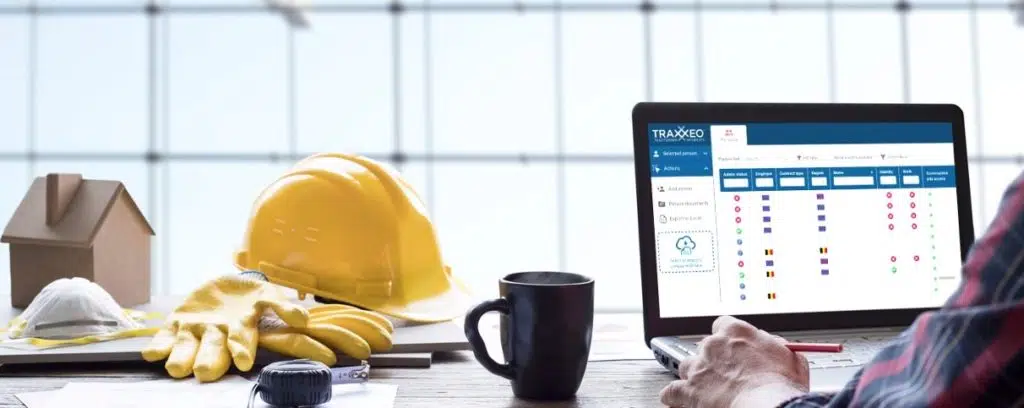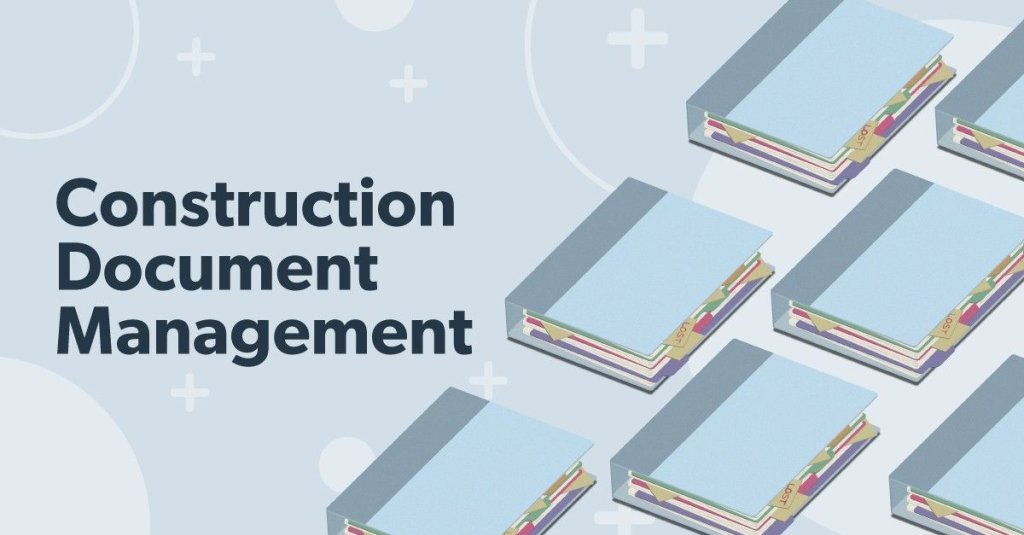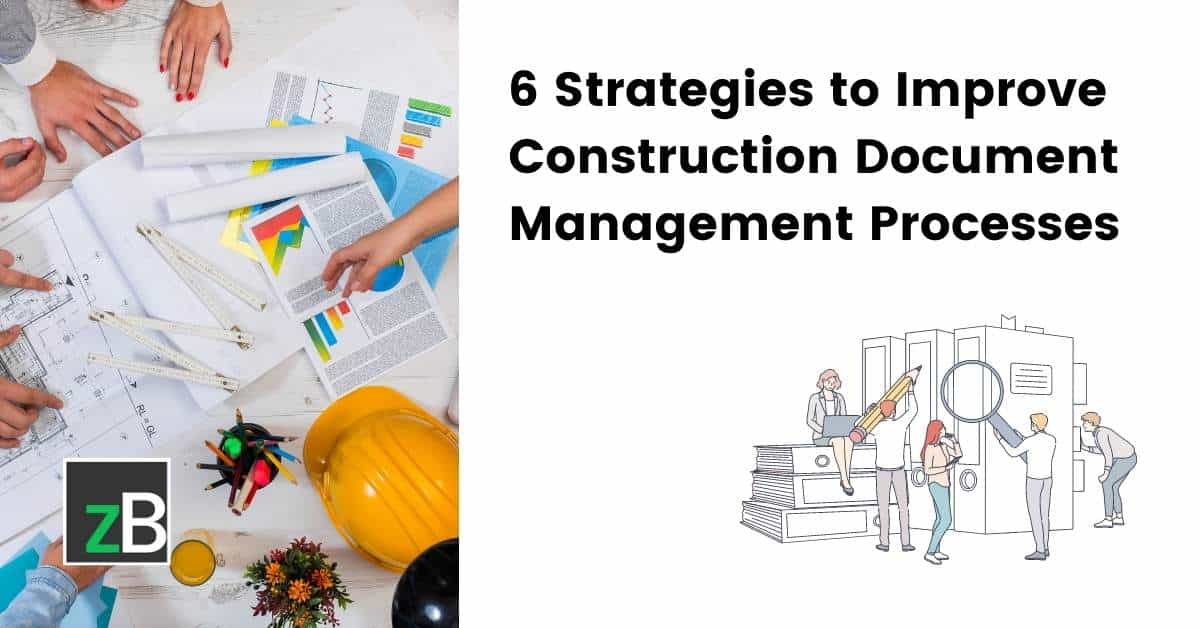Building Better Projects: The Role of Construction Document Management in Success
Building Better Projects: The Role of Construction Document Management in Success
Blog Article
Architect's Overview to Enhancing Construction Document Management for Efficient Task Execution
In the detailed world of architecture and construction, the efficient management of project documentation stands as a keystone for success. Designers are tasked with managing a myriad of drawings, specifications, records, and contracts, all crucial elements for bringing a job to fruition. The procedure of arranging, sharing, and maintaining these records can usually end up being a maze of inefficiencies and troubles if not dealt with thoroughly. By exploring organized strategies, innovative devices, and industry ideal methods, architects can not only improve their document monitoring procedures yet additionally lead the method for a lot more effective job implementation. Allow's navigate via the key strategies and solutions that can reinvent just how engineers deal with construction documentation, making certain projects are delivered with accuracy and timeliness.
Relevance of Effective Record Monitoring
Why is effective file administration crucial for designers in the construction market? Effective document management is crucial for architects in the building and construction industry as it plays an essential function in making sure the successful execution of jobs. Designers take care of a huge variety of papers, varying from layout drawings and specs to licenses and agreements. Appropriate company and monitoring of these documents are important to preserve task timelines, make certain conformity with policies, and assist in efficient interaction amongst task stakeholders.

Effective record administration enables designers to accessibility crucial details quickly, track project development precisely, and mitigate threats connected with omissions or mistakes. By executing streamlined paper administration procedures, designers can enhance collaboration with clients, professionals, and various other team participants, bring about improved job results and customer satisfaction.
In addition, reliable paper management assists engineers maintain a detailed project background, enabling them to take advantage of past lessons and experiences discovered for future projects. In today's fast-paced building and construction market, where timely decision-making and details sharing are critical, efficient file monitoring is a cornerstone for success.
Techniques for Streamlining Record Organization
Effective record management techniques not only ensure task success for designers in the building and construction industry but likewise lay the structure for carrying out strategies for simplifying file organization. To enhance document company effectively, architects ought to initially establish a clear identifying convention for data and folders. Uniformity in calling documents based on job stages, file kinds, and pertinent details will certainly assist in simple access and minimize confusion.
Making use of cloud-based storage space services can likewise boost file organization by offering a central place for all project-related documents - construction document management. This permits staff member to access one of the most updated records from anywhere, advertising collaboration and performance. Executing variation control systems further fine-tunes paper organization by tracking modifications, preventing conflicting edits, and guaranteeing that the most up to date variations are always available
Furthermore, developing a logical folder structure with assigned subfolders for various file classifications, such as agreements, specifications, and illustrations, can streamline record management procedures. Regularly reviewing and removing redundant or outdated documents will assist keep a lean and orderly paper repository, eventually improving performance and job outcomes.
Leveraging Technology Devices for Cooperation
In the realm of modern design, architects are increasingly depending on innovative modern technology tools to foster seamless cooperation among task stakeholders. Leveraging technology for partnership improves interaction, boosts performance, and improves overall job end results. Cloud-based platforms such as BIM 360 and Procore allow real-time accessibility to task files, allowing clients, service providers, and engineers to collaborate successfully no matter their physical place. These tools assist in simultaneous modifying, variation control, and immediate updates, reducing mistakes and hold-ups triggered by miscommunications.
Online layout and building and construction (VDC) software application like Revit and AutoCAD Architecture allow architects to produce comprehensive 3D designs that can useful content be shared and edited collaboratively. This real-time partnership boosts style coordination, precision, and visualization, causing far better decision-making throughout the job lifecycle. Furthermore, interaction devices like Slack and Microsoft Teams provide instantaneous messaging, documents sharing, and video clip conferencing capacities, cultivating smooth communication among group members and stakeholders.
Guaranteeing Accuracy and Version Control

Reliable variation control additionally aids in taking care of paper authorizations and making certain that only accredited employees make adjustments. Architects ought to establish clear methods for recording changes, consisting of timestamps and customer identification, to develop an audit route for liability. On a regular basis connecting with the task group regarding variation updates and changes is vital to prevent confusion and preserve positioning throughout the building and construction process.
Best Practices for File Sharing and Accessibility
Having established a robust system for variation control in construction file administration, architects can now focus on maximizing document sharing and access approaches to boost collaboration and efficiency amongst task stakeholders. These systems use real-time access to task records, enabling group participants to check out, edit, and comment on documents concurrently.
Furthermore, executing role-based gain access to control is important for maintaining information safety while promoting collaboration. Assigning various authorization levels to employee guarantees that delicate information is only obtainable to licensed personnel. Routinely upgrading access approvals based upon job requirements and group adjustments is important for maintaining information honesty.
Integrating project administration software program with document sharing systems can additionally enhance process. This integration enables for seamless interaction, job tracking, and document administration within a single interface, lowering the requirement to change between multiple tools. By complying with these best methods, designers can create an extra collaborative and effective document sharing setting, eventually causing successful task execution.

Verdict
Finally, effective construction document monitoring is critical for successful job implementation. By executing methods for organization, leveraging innovation devices for partnership, making certain accuracy and version control, in addition to complying with ideal practices for record see here sharing and accessibility, designers can streamline their process and improve general project performance. Prioritizing these elements of file administration will certainly bring about smoother project implementation and much better results for all stakeholders involved.
Efficient paper monitoring is important for engineers in the construction sector as it plays an essential duty in making sure the effective implementation of tasks. construction document management. Proper organization and management of these records are crucial to keep task timelines, guarantee conformity with regulations, and help with efficient interaction among project stakeholders
Effective paper management practices not just make certain task success for engineers in the building and construction sector but also lay the structure for implementing techniques for enhancing paper organization. One vital method is establishing a centralized file repository where all group participants can access the most recent versions of drawings, requirements, and other project records.Having developed a durable system for version control in building and construction record administration, designers can currently concentrate on optimizing record sharing and access approaches to improve partnership and efficiency among task stakeholders.
Report this page